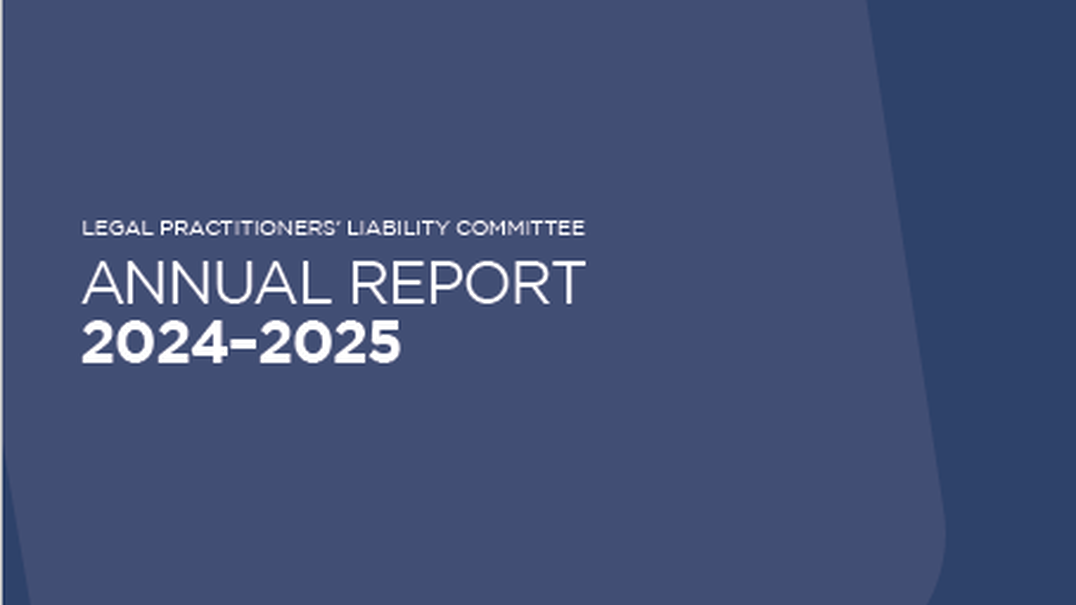When a client urgently needs a solicitor’s certificate for a loan guarantee, it’s easy for the matter to feel like a simple procedural step. In reality, these requests carry substantial professional risk and demand thorough advice, detailed record-keeping and strict compliance with rule 11. Before you take on the next last-minute guarantee, here’s what you need to know to protect both yourself and your client.
What's on this page?
Solicitors are often contacted to provide urgent advice to clients who are guaranteeing a loan or providing security for a third-party borrower pursuant to a guarantee. In most cases, the client requires a certificate in accordance with rule 11 of the Legal Profession Uniform Legal Practice (Solicitors) Rules 2015 (‘Solicitors Rules’) to satisfy the lender’s requirements. The certificate is commonly referred to as a solicitor’s certificate.
In practice this work can be difficult because:
- Solicitors are often contacted late in the transaction and there is pressure to do the work quickly so the borrower (usually related to the guarantor client in some way) can access the loan funds to meet their contractual, refinancing or other commitments.
- The client is only seeking independent advice because it is a lender’s requirement and not because they see it as necessary and important.
- Clients are not aware of the comprehensive work required by a solicitor to provide a solicitor’s certificate and incorrectly expect a ‘quick appointment to witness a signature’ at minimal cost.
Despite client expectations, completing the required work to provide a solicitor’s certificate takes time. It requires advice to the guarantor about the key aspects of the loan such as the loan amount, interest rates (including default rates), the loan term, security for the loan and the guarantor’s obligations and exposure to loss if the borrower defaults. Details of the specific advice given to clients should be recorded and retained for future reference. The detail in these records is important if a dispute arises at a future date.
Practical risk-management strategies
Many solicitors consider the time and cost pressures and the risk of a problem or claim associated with this work is too high and do not accept instructions to do this work. Other solicitors adopt a variety of risk management strategies to help manage the risk. Some of the risk management strategies that solicitors should consider and where appropriate implement, are:
- Only acting for existing clients and not accepting instructions for this work from a new or ‘walk in’ client.
- Only acting for one guarantor and not acting for both the guarantor and the borrower.
- Only allocating solicitor’s certificate work to solicitors with experience in this area.
- Ensure solicitors providing solicitor’s certificates maintain a good knowledge of relevant case law.
- Develop and use checklists (see LPLC checklists) to ensure all important advice is provided to the client including the key aspects of the loan such as the loan amount, interest rates (including default rates), the loan term, security for the loan and the guarantor’s obligations and exposure to loss if the borrower defaults.
- Establish and use proforma advice letters to generate written advice for the client (but amended and tailored to be specific and relevant to the client and their circumstances).
- Provide written advice to the client before seeing them in a face-to-face meeting.
- Ensure that the Verification of Identity and solicitor’s certificate is only completed at a face-to-face and in person meeting with the client.
- Always conduct the Verification of Identity Standard contained in Schedule 8 to the ARNECC Model Participation Rules (see rule 11.2 of the Solicitors Rules).
- Do not use other forms provided by a lender (even if they are similar to the prescribed forms) and only use the prescribed forms that are compliant with rule 11 of the Solicitors Rules.
- Do not sign the solicitor’s certificate if there is any doubt about the client’s understanding of both the guarantor obligations and the potential consequences to the client if the guarantee is called upon.
- If anything indicates or confirms the client is not providing the guarantee of their own free will, such as pressure by the borrower, then a solicitor should not provide the solicitor’s certificate.
- Encourage the client to take the time required to fully consider the advice, or to make further enquiries (such as a valuation of the borrower’s primary security) before signing the documents.
- Use an independent interpreter if the client has language difficulties and ensure that the interpreter completes the required certificate by a translator/interpreter in the prescribed form under rule 11 of the Solicitors Rules.
- Don’t forget that the client must also complete the solicitor’s certificate advice acknowledgement form prescribed under rule 11 of the Solicitors Rules.
- Ensure that a complete file record of all work is produced and retained, as all written advice and file notes are important to avoid or defend claims.
- Establish a system and process to retain the comprehensive file records for this work beyond the standard 7-year file retention requirements.
Good practice: Allowing adequate time
To further reduce the risks associated with this work, some firms have adopted a three-day minimum requirement for this work, along the following lines.
Day 1: Receive and review all documents.
Day 2: The solicitor provides a written advice letter to the client about the nature of the loan, guarantee and any security, including consequences for them on default.
Day 3: The solicitor conducts the face-to-face meeting with the client to verify identity and clarify that the client has read and understood the written advice. At this meeting the solicitor can test the client understands the obligations under the guarantee and potential consequences if the borrower defaults. It can be beneficial for the solicitor to use the LPLC checklist at this meeting.
Further resources
Solicitor’s certificates and guarantee advice is a high-risk area of legal work. The Legal Practitioners Liability Committee has produced additional resources which you can access on our website including;
- Risk guide: ‘Managing mortgage risk’
- Checklists: Solicitors certificates… - Legal Practitioners' Liability Committee
- Solicitor’s certificates home page: Solicitors Certificates - Legal Practitioners' Liability Committee
In addition, the full suite of the prescribed forms under rule 11 of the Solicitor Rules can be obtained online from eLawforms, here.




